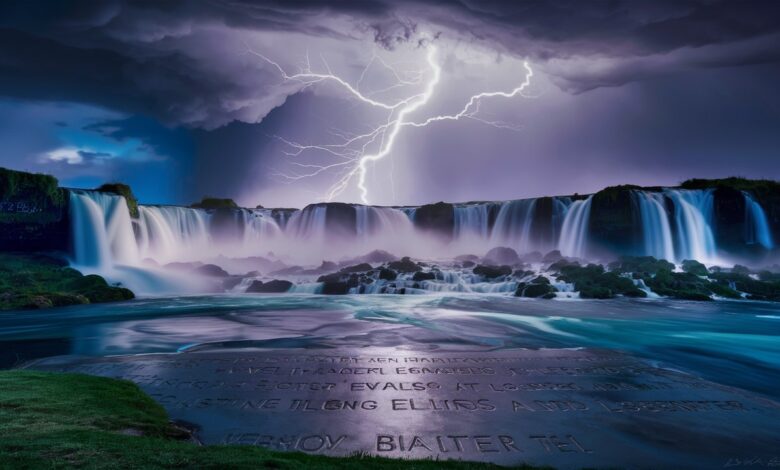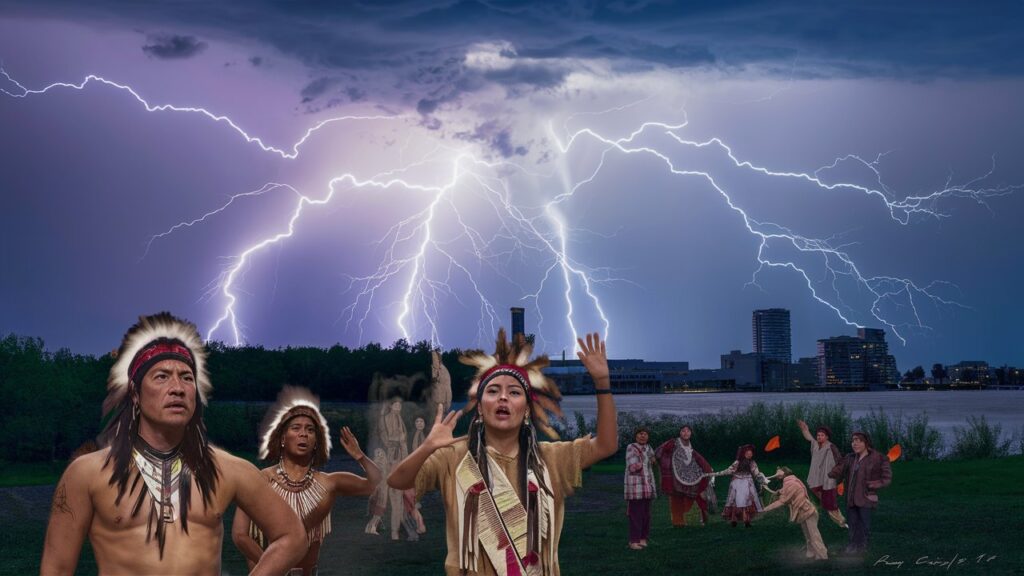Thunder Bay Thunder: Exploring the Power Legends and Legacy of a Natural Phenomenon

Introduction: The Roar of Thunder Bay
Thunder Bay, a city nestled on the shores of Lake Superior in Ontario, Canada, is a place where nature’s raw power collides with rich cultural history. Among its many wonders, the region is famously associated with the “Thunder Bay Thunder“—a term that evokes both the awe-inspiring storms that roll across the lake and the enduring legends tied to its name. This article dives deep into the origins, significance, and cultural impact of Thunder Bay’s thunder, weaving together science, folklore, and local pride. From the science of Lake Superior’s tempests to the thunderous spirit of its sports teams, we’ll explore how this natural phenomenon has shaped the identity of a community.
The Science Behind Thunder Bay’s Thunderstorms
Thunder Bay’s unique geography makes it a hotspot for dramatic weather. Lake Superior, the largest freshwater lake in the world by surface area, acts as a natural amplifier for storms. Cold air masses sweeping over the warmer lake waters create unstable atmospheric conditions, fueling intense thunderstorms. These storms often produce spectacular lightning displays and ear-splitting thunderclaps that reverberate across the bay. Meteorologists note that the “lake effect” not only intensifies storms but also prolongs their duration, making Thunder Bay one of Canada’s most thunder-prone regions.
The term “thunder” here isn’t just poetic—it’s a scientific reality. The sound of thunder is caused by the rapid expansion of air heated by lightning, and in Thunder Bay, the vast open landscapes allow these soundwaves to travel unimpeded. Residents and visitors alike describe the experience as both humbling and exhilarating, a reminder of nature’s dominance.
Legends of the Anishinaabe: Thunderbirds and Spiritual Power
Long before settlers arrived, the Anishinaabe people inhabited the region, and their stories imbue Thunder Bay’s thunderstorms with spiritual significance. Central to their cosmology is the Thunderbird, a colossal supernatural being said to create thunder by flapping its wings and lightning by blinking its eyes. According to oral traditions, Thunderbirds reside near Lake Superior, guarding the land and battling malevolent underwater creatures like the Mishipeshu (Great Lynx).
These legends aren’t mere myths; they reflect a deep connection to the environment. For the Anishinaabe, thunderstorms are manifestations of the Thunderbird’s power—a symbol of protection and renewal. Today, these stories are celebrated in local art, festivals, and educational programs, ensuring that the thunder’s cultural legacy endures.
Thunder Bay’s Sports Teams: Channeling the Thunderous Spirit
The city’s affinity for thunder transcends nature and folklore—it’s also a source of civic pride. Thunder Bay’s sports teams, such as the Thunder Bay North Stars (junior hockey) and the former Thunder Bay Thunder (basketball), have adopted the moniker to embody strength and resilience. The Thunder Bay Thunder basketball team, part of the National Basketball League of Canada in the 1990s, became a rallying point for the community, blending athleticism with local identity.
Even today, youth leagues and amateur teams use thunder-themed names, fostering a sense of unity. The thunder symbolizes not just power but perseverance, echoing the city’s history of overcoming challenges—from harsh winters to economic shifts.

Thunder Bay Thunder in Art and Music
The region’s creative minds have long drawn inspiration from its storms. Local artists like Robert Takatch depict thunderclouds over Lake Superior in vivid paintings, capturing their transient beauty. Musicians, too, weave thunder motifs into their work; folk bands incorporate drumming patterns that mimic storm rhythms, while poets pen verses about the sky’s “rolling drums.”
Annual events like the Thunder Bay Blues Festival and Superior Shores Theatre Company performances often highlight themes of nature’s grandeur. The thunder serves as both muse and metaphor, representing emotional intensity and the unpredictable rhythms of life.
The Dark Side of Thunder: Challenges and Safety
While the thunder inspires awe, it also poses risks. Thunder Bay averages 25-30 thunderstorms annually, some severe enough to cause flooding, power outages, or wildfires. In 2012, a historic storm dubbed the “Superior Tempest” dumped 100 mm of rain in hours, overwhelming infrastructure.
Local authorities emphasize preparedness, urging residents to heed weather alerts and avoid open areas during storms. Innovations like lightning detection systems and community emergency plans aim to mitigate risks. Yet, for many, respecting the thunder’s power is part of living in harmony with the land—a lesson passed down through generations.
Conclusion: Embracing the Thunder
Thunder Bay’s thunder is more than a meteorological event; it’s a thread woven into the fabric of the region’s identity. From ancient legends to modern-day sports teams, from canvases to concert halls, the roar of the sky unites the community. It reminds us of nature’s majesty, humanity’s vulnerability, and the resilience required to thrive in this rugged landscape. Whether you’re a storm chaser, a history buff, or simply curious, Thunder Bay invites you to listen—and to feel the thunder in your bones.
Frequently Asked Questions (FAQs)
1. Why is Thunder Bay called “Thunder Bay”?
The name originates from the Anishinaabe word Animikie, meaning “thunder.” French explorers later translated it to Baie du Tonnerre, which became Thunder Bay in English. The term honors both the area’s frequent storms and Indigenous heritage.
2. Are thunderstorms in Thunder Bay dangerous?
While most storms are manageable, severe ones can pose risks. Residents are advised to stay indoors, avoid water, and follow emergency updates during extreme weather.
3. What happened to the Thunder Bay Thunder basketball team?
The team disbanded in the early 2000s due to financial challenges but remains a beloved part of local sports history. Memorabilia can be found at the Thunder Bay Historical Museum.
4. How can tourists safely experience Thunder Bay’s storms?
View storms from sheltered areas like the Terry Fox Monument or indoors at the Thunder Bay Art Gallery. Never hike or boat during active thunderstorms.
5. Is the Thunderbird legend unique to Thunder Bay?
Thunderbird stories exist in many Indigenous cultures across North America, but Thunder Bay’s tales are closely tied to Lake Superior’s geography and the Anishinaabe people.
6. Does climate change affect Thunder Bay’s thunderstorms?
Scientists predict that warming lake temperatures may intensify storm frequency and severity, making climate resilience a growing focus for the community.
This article merges science, culture, and history to celebrate Thunder Bay’s thunder—a force that continues to shape its past, present, and future.



